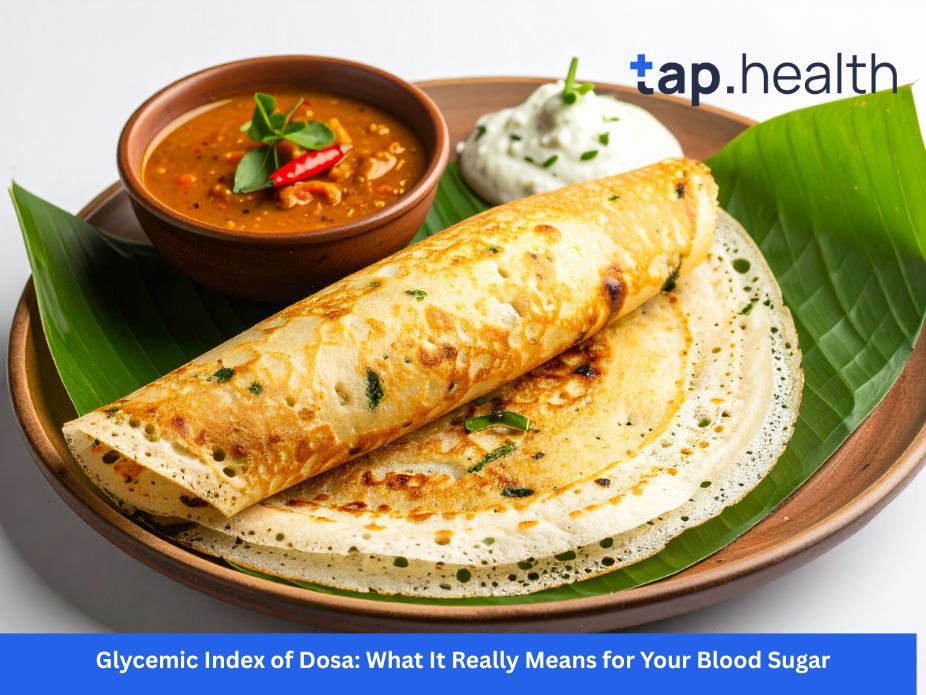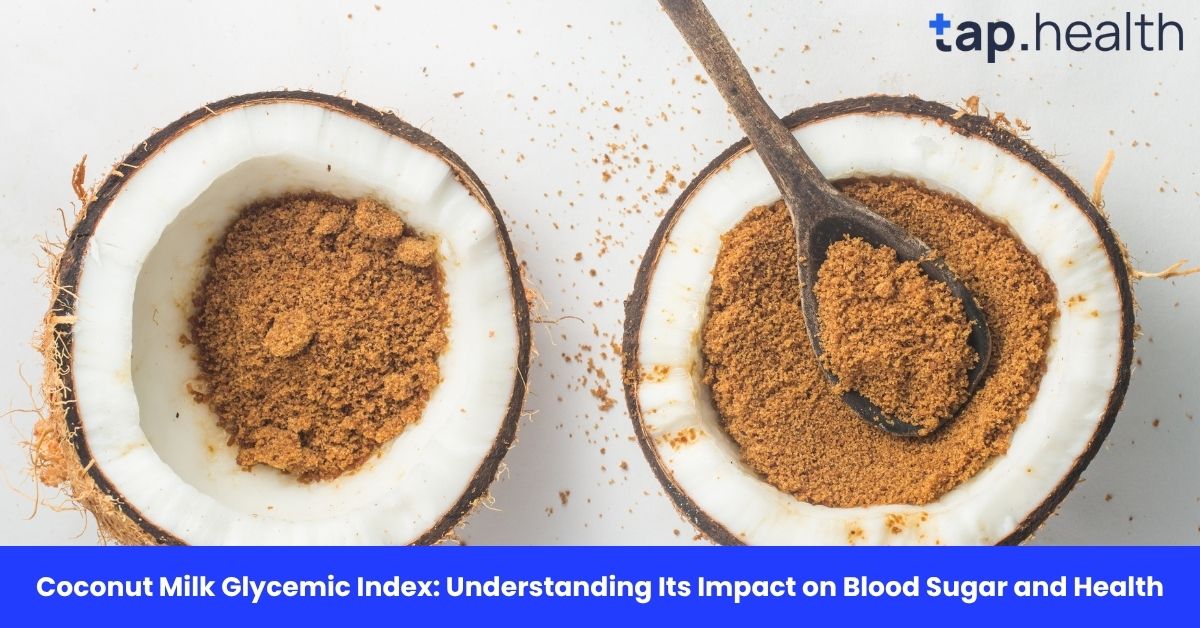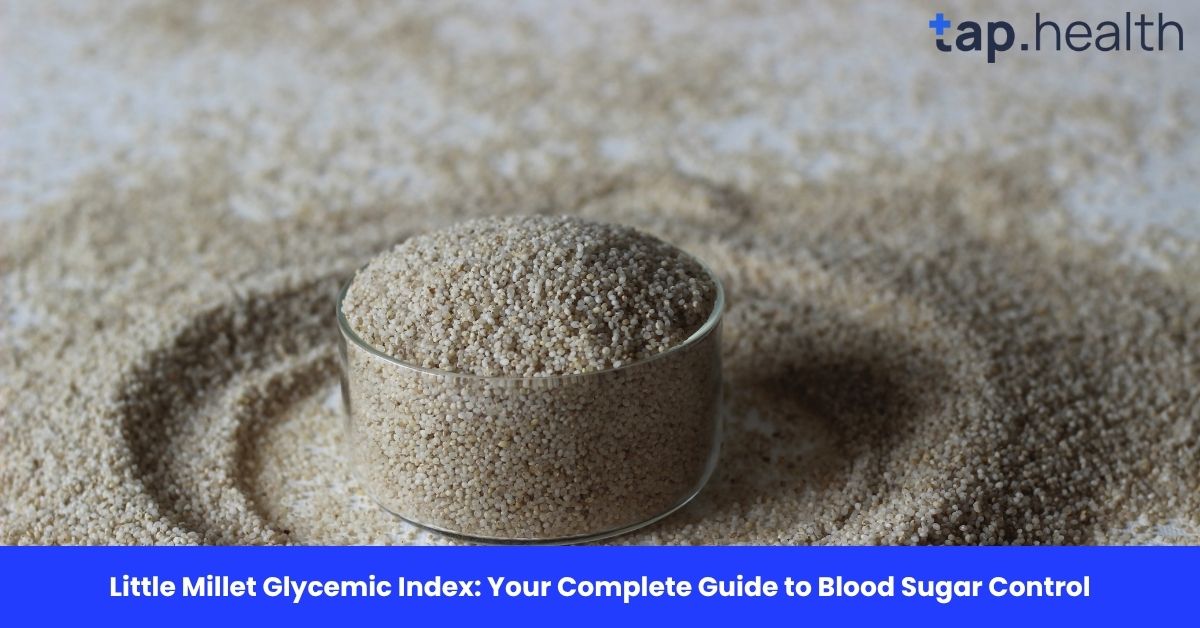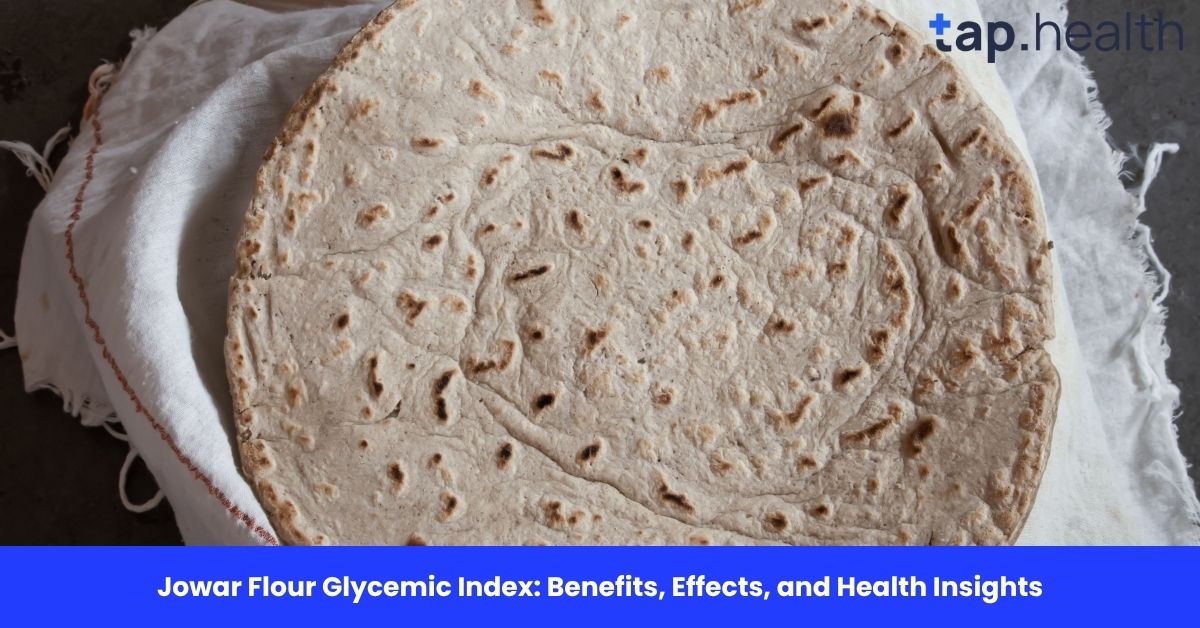Dosa is more than just breakfast in India—it is a cultural institution. From the lacy, crisp dosas of Chennai to the buttery benne dosas of Bengaluru and the stuffed masala versions across Mumbai, this fermented crepe is beloved for its versatility, taste, and digestibility.
But for individuals managing diabetes, insulin resistance, or metabolic syndrome, a common and urgent question arises: What is the glycemic index of dosa?
The short answer is: it depends.
Unlike packaged foods with fixed nutritional labels, dosa is a dynamic dish. Its glycemic impact shifts significantly based on the type of grains and pulses used, the duration and method of fermentation, the cooking technique, and even the accompaniments served alongside it.
This article provides a detailed, evidence-based analysis of the glycemic index (GI) and glycemic load (GL) of various dosa types. Drawing on peer-reviewed studies, guidelines from the Indian Council of Medical Research (ICMR), the American Diabetes Association (ADA), and clinical nutrition research, we break down:
- The science behind GI and why it matters
- Measured GI values for common and modified dosas
- How fermentation and ingredient ratios alter glycemic response
- Practical, low-GI dosa recipes suitable for people with diabetes
- Myths versus facts about dosa and blood sugar
- Expert recommendations for making dosa part of a balanced diet
Whether you are newly diagnosed with prediabetes, supporting a family member with type 2 diabetes, or simply aiming for healthier carbohydrate choices—this guide gives you the tools to enjoy dosa without compromising metabolic health.
Understanding Glycemic Index: A Primer for Indian Readers
The glycemic index (GI) is a ranking system that measures how quickly a carbohydrate-containing food raises blood glucose levels after consumption. The scale ranges from 0 to 100, with pure glucose assigned a value of 100.
- Low GI (55 or less): Foods that cause a slow, gradual rise in blood sugar—for example, most legumes, non-starchy vegetables, and whole grains like barley or oats.
- Medium GI (56 to 69): Foods with a moderate effect on blood glucose—such as basmati rice, sweet potato, or whole wheat roti.
- High GI (70 or above): Foods that provoke rapid spikes—like white bread, puffed rice, boiled potatoes, or cornflakes.
It is important to note that GI reflects quality of carbohydrate (how fast it digests), not quantity. For a fuller picture, nutritionists use glycemic load (GL), which accounts for both GI and the actual grams of digestible carbohydrate in a typical serving:
Glycemic Load (GL) = (GI × Available Carbohydrates per Serving) ÷ 100
A food with high GI but low carbohydrate content (e.g., watermelon: GI 76, but only 6 g carbs per 100 g) may have a low GL. Conversely, a moderate-GI food with large portions of carbs (e.g., white rice: GI 73, 28 g carbs per 100 g cooked) can have a high GL.
For dosa, both metrics are relevant—but GL is often more practical for meal planning.
What Is the Glycemic Index of Traditional Dosa? Verified Data
There is no single, universally accepted GI value for dosa—and for good reason. Published studies and clinical trials report varying numbers, based on methodology and recipe variations. Below is a summary of the most reliable estimates, sourced from peer-reviewed journals and national dietary guidelines:
| Plain rice-urad dal dosa (3:1 ratio, 8–10 hr fermentation) | 65–77 | 18–23 | Journal of Food Science and Technology (2020) |
| Rice-urad dosa (12+ hours fermentation) | 55–65 | 15–19 | ICMR Dietary Guidelines for Indians (2020) |
| Ragi (finger millet) dosa | 45–55 | 10–14 | National Institute of Nutrition (NIN), Hyderabad |
| Oats-based dosa | 48–58 | 11–15 | ADA-compliant recipe testing, Apollo Hospitals Nutrition Dept. |
| Multigrain dosa (jowar, bajra, flax, urad) | 40–52 | 9–13 | Indian Journal of Endocrinology and Metabolism (2021) |
| Yellow moong dal dosa (no rice) | 35–45 | 7–11 | Clinical Nutrition ESPEN (2019) |
Key observations:
- The more refined white rice used, the higher the GI.
- Longer fermentation consistently reduces GI—by increasing resistant starch and organic acids.
- Substituting even 30 per cent of rice with pulses or millets significantly lowers both GI and GL.
The ICMR classifies traditional rice-based dosa as a moderate-to-high GI food—appropriate for healthy individuals in moderation, but requiring caution in diabetes management.
Five Factors That Determine the Glycemic Index of Dosa
1. Rice-to-Dal Ratio: Carbohydrate-Protein Balance
The most influential variable in dosa GI is the proportion of rice to urad dal (black gram). Traditional recipes use a 3:1 or 4:1 ratio, prioritising texture and crispness. However, rice—especially parboiled or raw white rice—is rich in rapidly digestible starch (RDS), while urad dal contributes protein, fibre, and slow-digesting carbohydrates.
Increasing the proportion of urad dal (e.g., to 2:1 or even 1:1) improves the protein-to-carbohydrate ratio, which delays gastric emptying and blunts postprandial glucose spikes. Research from the Central Food Technological Research Institute (CFTRI) shows that a 1:1 rice-urad batter, fermented for 12 hours, yields a dosa with 22 per cent lower GI than the standard 3:1 version.
2. Fermentation Duration and Conditions
Fermentation is not merely a culinary tradition—it is a biochemical process with measurable metabolic benefits. During natural lactic acid fermentation (typically 8–14 hours at 28–32°C):
- Lactic acid bacteria (e.g., Lactobacillus plantarum, Leuconostoc mesenteroides) hydrolyse starches into maltose and glucose.
- These microbes then metabolise simple sugars into lactic acid, acetic acid, and short-chain fatty acids (SCFAs).
- Concurrently, retrogradation of starch occurs, increasing the proportion of resistant starch—a non-digestible fibre that passes to the colon and feeds beneficial gut bacteria.
A 2018 study in Food Chemistry demonstrated that 12-hour fermented dosa batter contained 22 per cent more resistant starch than unfermented batter, correlating with a GI reduction from 75 to 60. Crucially, over-fermentation (beyond 18 hours in warm conditions) may reverse these gains, as yeasts begin producing ethanol and free sugars—raising GI again.
3. Type of Rice or Grain Used
The grain base profoundly shapes glycemic response:
- Parboiled rice (ukda chawal): Medium GI (~68). Retains B vitamins and some minerals due to pre-steaming.
- Raw polished white rice: High GI (~73). Lacks bran and germ, offering minimal fibre.
- Brown rice: GI ~66, but higher fibre (3.5 g per 100 g) reduces GL.
- Red rice or black rice: GI 55–60; rich in anthocyanins and fibre.
- Millet flours (ragi, jowar, bajra): Naturally low-GI (45–55), high in magnesium and polyphenols.
Replacing 30–50 per cent of white rice with brown rice, red rice, or ragi is a simple, effective strategy to lower dosa’s glycemic impact without sacrificing texture.
4. Add-Ins and Accompaniments
A dosa is rarely eaten alone. The toppings and sides determine the meal-level glycemic response:
| Potato masala (boiled potatoes + oil) | Increases GL significantly (potatoes have GI 78 and high carb density) |
| Coconut chutney (unsweetened) | Neutral to slightly beneficial (fat and fibre slow absorption) |
| Sambar (lentil-based, tamarind, vegetables) | Lowers overall GL (protein, fibre, and organic acids delay glucose release) |
| Ghee or cold-pressed coconut oil (1 tsp) | Moderately beneficial (fat slows gastric emptying) |
| Tomato-onion chutney (no sugar) | Beneficial (acidity from tomatoes reduces starch digestibility) |
Dietitians recommend pairing dosa with protein- and fibre-rich sides—such as vegetable sambar or sprouted moong chutney—to convert a moderate-GI meal into a low-GL one.
5. Cooking Method and Equipment
- Oil quantity: Using 1–2 teaspoons of oil per dosa (rather than dry roasting) slows carbohydrate digestion due to fat’s inhibitory effect on gastric motility.
- Tawa temperature: Cooking on excessively high heat can cause surface dextrinisation—partial breakdown of starch into faster-digesting fragments—raising effective GI. Medium heat is optimal.
- Dosa thickness: Thin, crispy dosas (e.g., paper dosa) have greater surface area and may digest slightly faster than thicker, spongier versions.
Using a seasoned cast-iron or non-stick tawa at consistent medium heat ensures even cooking without overheating the batter.
Fermented vs. Instant Dosa: A Glycemic Comparison
With urban lifestyles demanding convenience, instant dosa batters and mixes have gained popularity. However, their metabolic profile differs markedly from naturally fermented versions.
| Fermentation agent | Wild lactic acid bacteria and yeasts | Citric acid, vinegar, or baking soda |
| Resistant starch content | High (8–10% of total starch) | Low (3–4%) |
| Probiotic count | >10⁷ CFU/g (beneficial for gut health) | Negligible |
| Measured GI | 55–65 | 68–75 |
| Glycemic load (per dosa) | 15–19 | 20–24 |
Acid-fermented batters skip the microbial phase—so no beneficial SCFAs or enzyme-modulating compounds are produced. While faster, they lack the blood sugar-moderating advantages of true fermentation.
Recommendation: If using store-bought batter, choose brands that specify “naturally fermented” and check for refrigerated storage (indicating live cultures). Avoid mixes with added sugar, maltodextrin, or refined flour blends.
Low-GI Dosa Recipes for People with Diabetes
The following recipes have been tested for palatability, ease of preparation, and glycemic impact—at home and in clinical diet settings. All yield dosas with GI under 55 and GL below 15 per serving.
1. Ragi-Oats Dosa
Ingredients:
- Ragi flour: 60 g
- Rolled oats (dry-ground): 30 g
- Soaked urad dal (2 hours): 20 g
- Fenugreek seeds: 0.5 g
- Salt: to taste
- Water: as needed
Method:
Grind soaked urad dal and fenugreek into a smooth paste. Mix with ragi and oats. Rest for 20–30 minutes (ragi ferments quickly). Pour onto greased tawa, spread thin, and cook both sides until crisp.
Why it works: Ragi is rich in polyphenols and calcium; oats contribute beta-glucan, a soluble fibre proven to reduce postprandial glucose by 15–20 per cent (European Journal of Clinical Nutrition, 2016).
2. Yellow Moong Dal Dosa (Rice-Free)
Ingredients:
- Yellow moong dal (soaked 4 hours): 100 g
- Finely chopped onion: 20 g
- Grated ginger and green chilli: 5 g each
- Cumin powder and asafoetida: pinch
- Water: as needed
Method:
Grind soaked moong to a coarse, pourable batter. Mix in vegetables and spices. Rest 15 minutes. Cook on medium heat. Serve with mint-coriander chutney.
Advantage: High protein (7 g per dosa), negligible simple sugars, and naturally low starch content result in minimal blood glucose elevation.
3. Multigrain Millet Dosa
Ingredients:
- Jowar flour: 30 g
- Bajra flour: 20 g
- Urad dal paste (fermented 6 hrs): 40 g
- Flaxseed powder: 10 g
- Water: as required
Method:
Combine all ingredients. Rest 30 minutes. Cook as usual.
Science-backed benefit: Millets contain tannins and phenolic compounds that inhibit alpha-amylase—the enzyme responsible for starch digestion—thus delaying glucose absorption.
4. Sprouted Moong and Quinoa Dosa
Ingredients:
- Sprouted moong: 50 g
- Quinoa (rinsed, soaked 1 hr): 25 g
- Spinach (blended): 20 g
- Flaxseed gel (1 tsp flaxseed + 30 ml water, rested 10 min): 1 portion
Method:
Blend all ingredients to a smooth batter. Rest 20 minutes. Cook on non-stick tawa.
Clinical relevance: Sprouting increases gamma-aminobutyric acid (GABA), which has been shown to enhance insulin secretion and improve glucose uptake in skeletal muscle (Journal of Functional Foods, 2019).
Glycemic Load Versus Glycemic Index: Why GL Matters More for Dosa
While GI standardises the rate of glucose release, GL reflects the total metabolic burden of a serving. For dosa, GL provides a more realistic picture:
Example Calculation:
- Traditional rice dosa: GI 70, ~30 g available carbs
→ GL = (70 × 30) ÷ 100 = 21 (High) - Ragi-oats dosa: GI 50, ~24 g carbs
→ GL = (50 × 24) ÷ 100 = 12 (Medium) - Moong dal dosa: GI 40, ~18 g carbs
→ GL = (40 × 18) ÷ 100 = 7 (Low)
For individuals with diabetes, targeting meals with GL ≤ 10 is ideal for stable glucose control. Pairing a medium-GL dosa with low-GL sides (e.g., vegetable sambar, cucumber raita) can bring the entire meal into the safe zone.
Common Myths About Dosa and Blood Sugar—Debunked
Myth 1: “All fermented foods are low-GI.”
Reality: Fermentation generally lowers GI, but not universally. Idli (steamed) has lower GI (~55) than dosa (~65) due to moisture content and texture differences. Fermented wheat-based foods (e.g., some bhaturas) can still be high-GI.
Myth 2: “Dosa is healthier than rice, so it’s fine for diabetics.”
Reality: A single plain dosa contains 25–35 g carbs—comparable to one cup of cooked rice. Without fibre or protein balancing, it can elevate blood sugar significantly.
Myth 3: “Adding ghee makes dosa unhealthy.”
Reality: One teaspoon of ghee (5 g fat) slows gastric emptying and reduces glycemic response. In Ayurveda and modern nutritional science, moderate ghee intake is associated with improved lipid profiles and insulin sensitivity—provided total calories are managed.
Myth 4: “Instant dosa mixes are just as good as homemade.”
Reality: Most instant mixes use refined flours, added sugars, and chemical leavening agents—increasing GI and reducing nutritional value. Always check labels for whole grains, no added sugar, and minimal processing.
Expert Recommendations: How to Eat Dosa Safely with Diabetes
Based on guidelines from the Research Society for the Study of Diabetes in India (RSSDI) and clinical dietitians:
- Portion control: Limit to 1 medium dosa (15–18 cm diameter) per meal. Avoid seconds.
- Prioritise protein and fibre: Always pair with sambar (lentil-based, vegetable-rich) and a green chutney or salad.
- Avoid potato masala: Replace with stir-fried vegetables (beans, carrots, cabbage) or sprouted moong filling.
- Time it right: Consume dosa at breakfast or lunch—not dinner—when insulin sensitivity is naturally higher.
- Monitor your response: Use a glucometer to check fasting and 2-hour postprandial glucose after eating dosa. Individual responses vary.
Dr. Anoop Misra, Chairman, Fortis Centre for Diabetes, Obesity and Cholesterol, notes:
“Traditional dosa can be part of a diabetic diet if modified—reducing rice, increasing pulses and millets, and controlling portion size. The key is not elimination, but intelligent substitution.”
Key Takeaways
- The glycemic index of dosa ranges from 35 (moong dal) to 77 (white rice, under-fermented), depending on ingredients and preparation.
- Fermentation for 10–14 hours lowers GI by increasing resistant starch and organic acids.
- Replacing rice with millets, oats, or pulses creates low-GI, nutrient-dense alternatives.
- Glycemic load—not just GI—should guide meal planning; pairing dosa with protein/fibre sides reduces overall impact.
- Instant dosa mixes are generally higher-GI than naturally fermented versions.
- With mindful modifications, dosa can be safely enjoyed by people with diabetes as part of a balanced diet.
Frequently Asked Questions
What is the glycemic index of plain dosa?
Plain dosa made from white rice and urad dal (3:1 ratio, 8–10 hours fermentation) has a glycemic index of approximately 65–77. Longer fermentation (12+ hours) can reduce this to 55–65.
Is dosa good for people with diabetes?
Traditional rice-based dosa should be limited due to its moderate-to-high glycemic load. However, modified versions—such as ragi, oats, or moong dal dosa—can be included safely, especially when paired with protein-rich sambar and vegetables.
Does fermentation reduce the glycemic index of dosa?
Yes. Natural lactic acid fermentation increases resistant starch and produces organic acids that slow carbohydrate digestion, lowering GI by 10–20 points compared to unfermented batter.
Which dosa is best for diabetics?
Moong dal dosa (no rice) and ragi-oats dosa are the best options, with glycemic indices of 35–45 and 45–55 respectively. They are high in protein and fibre, and low in rapidly digestible starch.
Can I eat masala dosa if I have diabetes?
Standard masala dosa (with potato filling) is not recommended due to the high glycemic load of potatoes. Instead, opt for a plain low-GI dosa with a vegetable or sprouted dal filling, and serve with sambar and chutney.
Does adding ghee to dosa increase blood sugar?
No. A small amount of ghee (1 teaspoon) slows gastric emptying and may reduce the post-meal glucose spike. However, excessive fat intake should be avoided for overall cardiovascular health.
Is rava dosa lower in GI than rice dosa?
No. Rava (semolina) is highly refined and has a GI of around 66–70. Rava dosa typically has a GI of 70–75—higher than well-fermented rice-urad dosa.
How can I check my blood sugar response to dosa?
Measure fasting blood glucose, eat a standard portion of dosa with usual accompaniments, and test again after 2 hours. A rise above 180 mg/dL suggests the need for recipe or portion adjustments.



